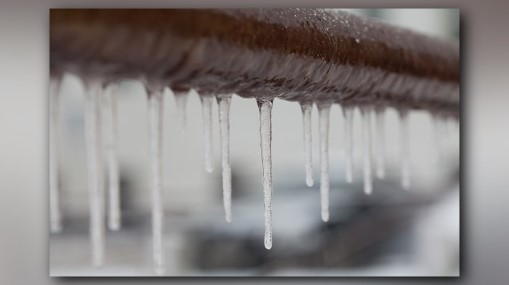Preventing Frozen Plumbing in Winter: Key Advice
Preventing Frozen Plumbing in Winter: Key Advice
Blog Article
Just how do you really feel about 6 Ways to Prevent Frozen Pipes?

Cold weather can damage your plumbing, especially by freezing pipelines. Below's just how to prevent it from happening and what to do if it does.
Intro
As temperature levels decrease, the danger of frozen pipelines increases, possibly causing pricey repairs and water damage. Understanding just how to avoid frozen pipes is vital for home owners in chilly climates.
Avoidance Tips
Shielding susceptible pipelines
Cover pipes in insulation sleeves or utilize warm tape to safeguard them from freezing temperatures. Focus on pipelines in unheated or external areas of the home.
Home heating methods
Maintain indoor rooms effectively warmed, specifically areas with plumbing. Open cupboard doors to allow cozy air to flow around pipes under sinks.
How to determine frozen pipes
Look for lowered water circulation from taps, uncommon odors or noises from pipes, and noticeable frost on subjected pipes.
Long-Term Solutions
Architectural changes
Think about rerouting pipelines away from outside wall surfaces or unheated areas. Include extra insulation to attic rooms, basements, and crawl spaces.
Upgrading insulation
Purchase top quality insulation for pipes, attic rooms, and wall surfaces. Appropriate insulation assists maintain consistent temperature levels and lowers the risk of frozen pipelines.
Shielding Outside Pipes
Yard hoses and outside taps
Separate and drain garden pipes before wintertime. Install frost-proof spigots or cover outdoor taps with insulated caps.
Comprehending Frozen Pipelines
What creates pipelines to ice up?
Pipes ice up when exposed to temperature levels listed below 32 ° F (0 ° C) for extended durations. As water inside the pipelines ices up, it broadens, putting pressure on the pipe wall surfaces and potentially triggering them to rupture.
Dangers and damages
Icy pipelines can lead to supply of water disturbances, building damages, and expensive repairs. Burst pipelines can flooding homes and cause comprehensive architectural damage.
Indications of Frozen Water Lines
Recognizing frozen pipelines early can prevent them from rupturing.
What to Do If Your Pipes Freeze
Immediate actions to take
If you think icy pipes, maintain taps open to ease pressure as the ice thaws. Make use of a hairdryer or towels taken in hot water to thaw pipes slowly.
Conclusion
Stopping icy pipelines needs positive actions and fast reactions. By recognizing the reasons, indicators, and preventive measures, home owners can protect their pipes throughout cold weather.
5 Ways to Prevent Frozen Pipes
Drain Outdoor Faucets and Disconnect Hoses
First, close the shut-off valve that controls the flow of water in the pipe to your outdoor faucet. Then, head outside to disconnect and drain your hose and open the outdoor faucet to allow the water to completely drain out of the line. Turn off the faucet when done. Finally, head back to the shut-off valve and drain the remaining water inside the pipe into a bucket or container. Additionally, if you have a home irrigation system, you should consider hiring an expert to clear the system of water each year.
Insulate Pipes
One of the best and most cost-effective methods for preventing frozen water pipes is to wrap your pipes with insulation. This is especially important for areas in your home that aren’t exposed to heat, such as an attic. We suggest using foam sleeves, which can typically be found at your local hardware store.
Keep Heat Running at 65
Your pipes are located inside your walls, and the temperature there is much colder than the rest of the house. To prevent your pipes from freezing, The Insurance Information Institute suggests that you keep your home heated to at least 65 degrees, even when traveling. You may want to invest in smart devices that can keep an eye on the temperature in your home while you’re away.
Leave Water Dripping
Moving water — even a small trickle — can prevent ice from forming inside your pipes. When freezing temps are imminent, start a drip of water from all faucets that serve exposed pipes. Leaving a few faucets running will also help relieve pressure inside the pipes and help prevent a rupture if the water inside freezes.
Open Cupboard Doors
Warm your kitchen and bathroom pipes by opening cupboards and vanities. You should also leave your interior doors ajar to help warm air circulate evenly throughout your home.

I stumbled upon that review about How to Prevent Your Pipes From Freezing while doing a search on the web. In case you enjoyed our page please don't forget to pass it around. I value your readership.
Schedule Estimate Report this page